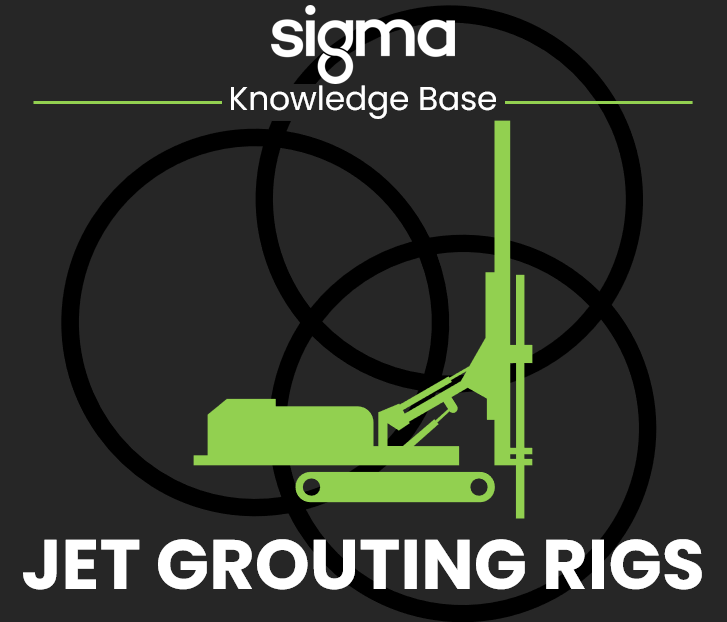
Introduction:
In the ever-evolving realm of civil engineering and construction, innovative techniques continue to redefine the way we approach ground improvement. Jet grouting, a specialized method in the geotechnical engineer's toolbox, stands out as a versatile and effective solution for stabilizing soil, controlling groundwater, and enhancing the overall performance of foundations. In this blog, we will explore the intricacies of jet grouting, shedding light on its principles, applications, and the benefits it brings to various construction projects.
Understanding Jet Grouting:
Jet grouting is a ground improvement technique that involves injecting a high-pressure stream of cementitious grout into the soil to create a cement-soil composite. This process reinforces and stabilizes the ground, making it suitable for supporting structures, mitigating settlement issues, and controlling seepage.
Key Components of Jet Grouting:
1. Grout Composition:
The grout used in jet grouting typically consists of a mixture of cement, water, and additives. The specific composition can be adjusted based on the project requirements and soil conditions.
2. Drill Rods and Nozzles:
Jet grouting utilizes specialized equipment, including drill rods and nozzles. The drill rods are inserted into the ground, and the nozzles emit the high-pressure grout stream that penetrates and mixes with the surrounding soil.
3. Injection Parameters:
Controlling injection parameters such as grout pressure, flow rate, and nozzle orientation is crucial for achieving the desired results. Engineers tailor these parameters based on the soil type, depth, and project specifications.
Applications of Jet Grouting:
1. Foundation Support:
Jet grouting is widely employed to improve the load-bearing capacity of soil, making it an ideal solution for supporting foundations of buildings, bridges, and other structures.
2. Seepage Control:
In projects where controlling groundwater flow is crucial, jet grouting is utilized to create impermeable barriers, preventing water infiltration and safeguarding structures from potential damage.
3. Tunneling and Excavation Support:
Jet grouting reinforces the soil around tunnel excavations, creating stable walls and preventing collapses. This is particularly beneficial in urban areas where tunneling is often performed in close proximity to existing structures.
4. Land Reclamation:
In coastal and waterfront projects, jet grouting can be employed to stabilize loose or sandy soil, facilitating land reclamation and creating a solid foundation for development.
Benefits of Jet Grouting:
1. Versatility:
Jet grouting can be adapted to various soil types and conditions, making it a versatile solution for a wide range of construction and geotechnical challenges.
2. Rapid Execution:
Compared to traditional ground improvement methods, jet grouting is known for its efficiency and speed. It allows construction projects to proceed quickly, minimizing downtime.
3. Minimal Disruption:
Jet grouting is a minimally invasive technique, making it suitable for urban environments and areas with limited access. Its ability to work in confined spaces without disturbing the surrounding structures is a significant advantage.
Conclusion:
Jet grouting stands as a testament to the constant evolution of geotechnical engineering. Its versatility, efficiency, and ability to address diverse challenges make it a valuable tool for modern construction projects. As technology continues to advance, jet grouting is likely to play an even more pivotal role in shaping the foundations of the built environment, ensuring stability and durability for structures around the globe.
Contact us!
T: +44 (0) 1642 206100
E: sales@sigmaplantfinder.com
Disclaimer: This blog post contains content generated by an artificial intelligence (AI) model. While we have made efforts to ensure the accuracy and quality of the information provided, it is important to note that AI-generated content may not always be error-free or fully aligned with current standards, regulations, or the latest research. We recommend using this information as a starting point for your research and analysis, but we strongly encourage you to verify the facts, consult experts, and cross-reference the content with trusted sources before making any decisions or drawing conclusions based on the information presented in this blog post. The views and opinions expressed in this content are not necessarily those of the blog's author or publisher, and we cannot be held responsible for any consequences that may arise from its use.
